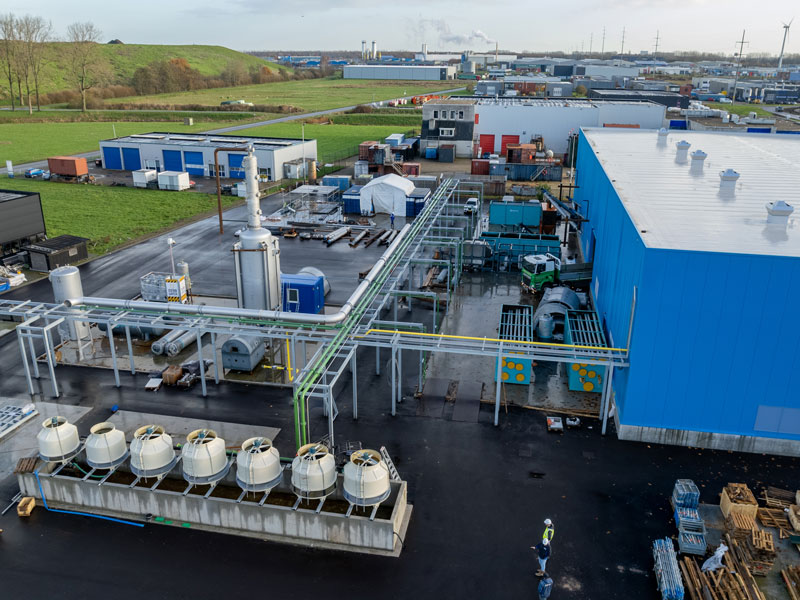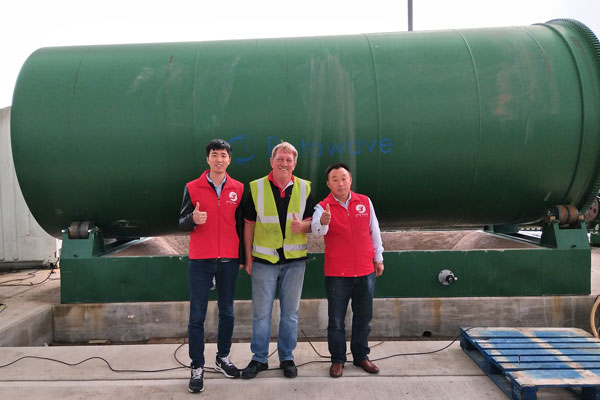Eco-Friendly Tire Disposal: The Constant Evolution of Pyrolysis Plants
In a world grappling with environmental challenges, finding sustainable solutions for waste management is imperative. One significant environmental concern is the disposal of tires, which often end up in landfills, posing a threat to ecosystems. The evolution of pyrolysis plants represents a promising avenue for eco-friendly tire disposal. In this comprehensive exploration, we delve into the evolution of fully continuous tyre pyrolysis plant, examining their role in transforming discarded tires into valuable resources while minimizing environmental impact.

The Tire Disposal Challenge:
The conventional methods of tire disposal, such as landfilling or incineration, not only contribute to environmental pollution but also fail to harness the latent energy and materials within tires. As the global vehicle fleet expands, so does the volume of discarded tires, necessitating innovative and sustainable solutions.
The Birth of Pyrolysis Technology:
Pyrolysis, a thermal decomposition process in the absence of oxygen, emerged as a breakthrough technology for tire disposal. Unlike traditional methods, pyrolysis allows for the conversion of tires into valuable products without harmful emissions. The process involves heating tires in a controlled environment, breaking them down into char, oil, and gas.
Evolutionary Stages of Pyrolysis Plants:
Batch Pyrolysis Plants:
Early pyrolysis plants operated on a batch basis, processing a limited quantity of tires in each cycle. While these systems marked a significant departure from traditional disposal methods, they were characterized by intermittent operation, posing challenges in terms of efficiency and scalability.
Semi-Continuous Pyrolysis Plants:
Recognizing the need for improved efficiency, semi-continuous pyrolysis plants were developed. These plants featured enhanced automation and continuous feeding systems, allowing for more consistent operation. Although an improvement, these systems still faced limitations in achieving uninterrupted processing.
Fully Continuous Pyrolysis Plants:
The pinnacle of pyrolysis plant evolution is the waste tire pyrolysis equipment. These state-of-the-art systems operate 24/7, providing a constant flow of tire processing. The transition from batch to semi-continuous and finally to fully continuous has significantly increased efficiency, reduced downtime, and enhanced the overall sustainability of tire disposal.

Key Components of Fully Continuous Pyrolysis Plants:
Automatic Feeding Systems:
Fully continuous pyrolysis plants are equipped with automated feeding systems that allow for a continuous input of tires. This eliminates the need for manual loading, ensuring a seamless and uninterrupted process.
Rotary Reactors:
The heart of the pyrolysis process lies in the rotary reactors. These high-capacity reactors ensure a constant and controlled environment for tire decomposition, maximizing the yield of valuable end products-char, oil, and gas.
Efficient Heating Systems:
To achieve continuous operation, efficient heating systems are crucial. Advanced heating methods, such as indirect heating or the use of hot air technology, contribute to energy efficiency and minimize environmental impact.
Gas Cleaning Systems:
Continuous pyrolysis plants often incorporate sophisticated gas cleaning systems to purify the syngas generated during the process. This ensures that harmful emissions are minimized, aligning with eco-friendly standards.
Product Recovery and Separation Units:
Fully continuous pyrolysis plants include advanced systems for the recovery and separation of end products. This allows for the efficient extraction of char, oil, and gas, each of which holds valuable applications.
Environmental Benefits of Fully Continuous Pyrolysis Plants:
Reduced Greenhouse Gas Emissions:
By preventing tires from ending up in landfills or being incinerated, fully continuous pyrolysis plants contribute to reducing greenhouse gas emissions. The controlled pyrolysis process minimizes the release of harmful substances into the atmosphere.
Resource Recovery:
The end products of tire pyrolysis-char, oil, and gas-hold significant value. Char can be used as a soil amendment, oil can be refined into valuable fuels, and gas can be utilized for energy generation. This resource recovery minimizes the need for virgin materials, promoting a circular economy. View the case: waste pyrolysis plant UK.
Energy Independence:
The syngas produced during tire pyrolysis can be utilized as a source of energy. By harnessing this gas for internal heating needs or electricity generation, fully continuous pyrolysis plants contribute to reducing dependence on conventional energy sources.
Case Studies: Leading the Way in Eco-Friendly Tire Disposal
Phoenix Energy’s Continuous Pyrolysis Solution:
Phoenix Energy, a pioneer in the field of sustainable waste management, has implemented fully continuous pyrolysis plants to address tire disposal challenges. Their advanced technology ensures efficient and environmentally friendly tire recycling, setting a benchmark for the industry.
Green Tire Recycling Inc.’s 24/7 Operation:
Green Tire Recycling Inc. has embraced fully continuous pyrolysis technology to establish a tire recycling facility that operates round the clock. The facility not only effectively disposes of tires but also extracts valuable resources, contributing to a more sustainable and circular economy.
Challenges and Future Prospects:
While fully continuous pyrolysis plants represent a significant leap forward in sustainable tire disposal, challenges persist. Initial investment costs, regulatory frameworks, and public awareness are factors that influence the widespread adoption of this technology. However, ongoing research and development, along with increasing environmental consciousness, are driving the evolution of fully continuous pyrolysis plants.
Conclusion:
The constant evolution of pyrolysis plants, particularly the transition to fully continuous systems, marks a transformative moment in the quest for eco-friendly tire disposal. These advanced technologies not only address the environmental challenges associated with tire waste but also contribute to resource recovery and energy independence. As fully continuous pyrolysis plants become more prevalent, they hold the key to a future where tire disposal is no longer a problem but an opportunity for sustainable innovation. By embracing these advancements, we pave the way for a cleaner, greener, and more efficient approach to managing one of the most significant waste streams in our modern world.